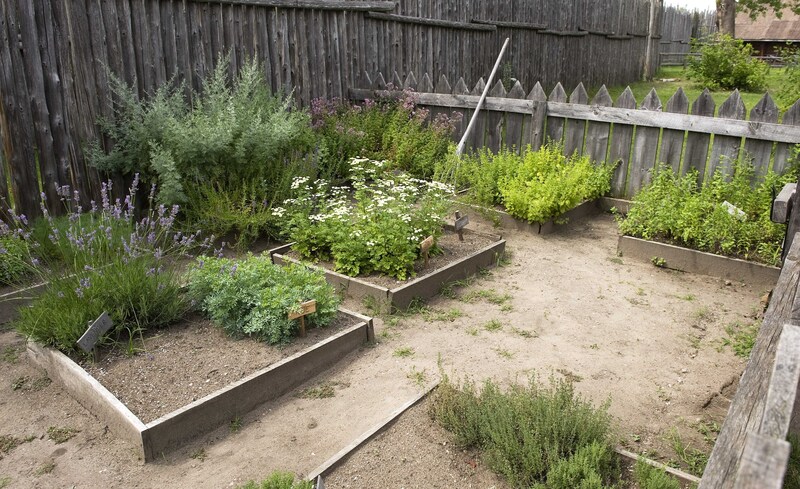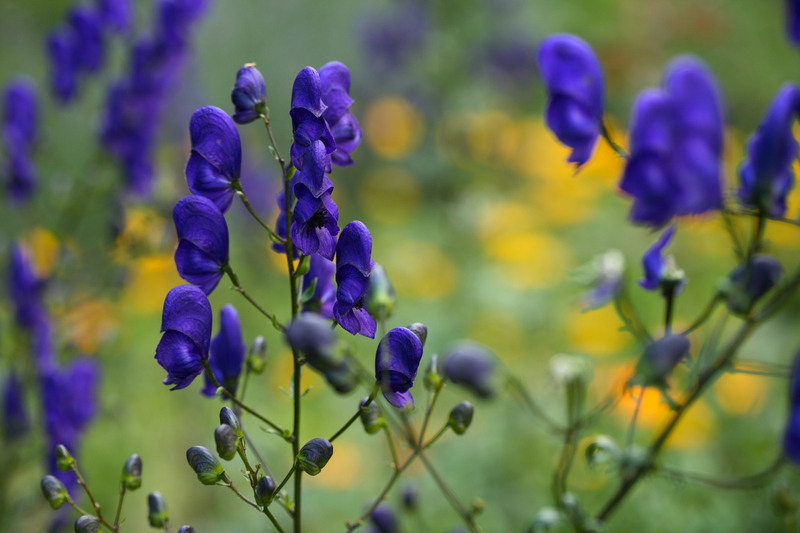How to Use Plants and Design Features for a More Private Outdoor Space
In an era where urban density and smaller lot sizes often mean less privacy, cultivating a secluded retreat right in your own backyard is both desirable and achievable. This comprehensive guide will show you how plants and clever design features can transform your garden, patio, or balcony into a peaceful, private sanctuary.
Why Outdoor Privacy Matters
Enjoying your outdoor space is much easier when you feel shielded from neighbors and passersby. Privacy in your garden or patio encourages relaxation, increases your property's value, and allows for more secure, versatile use of your space. Whether you host gatherings or simply want a quiet escape, learning to use plantings and key design features for a more private outdoor space is essential.

Plants: Nature's Living Privacy Screens
Plants are not only aesthetic additions to your garden; they are also functional tools to create privacy. Unlike fences, green living screens can soften hardscapes, improve air quality, and support biodiversity. Here is how to use various types of plants to achieve your privacy goals:
Understanding Plant Selection for Privacy
- Evergreens: These provide year-round screening. Types like arborvitae, laurel, holly, and yew are dense, rapid growers.
- Deciduous Trees and Shrubs: Great for summer privacy and letting light through in winter. Hornbeam, serviceberry, and viburnum are excellent options.
- Bamboo: Fast-growing clumping bamboos offer quick privacy but must be chosen with care to avoid spreading.
- Hedges: Formal or informal hedges using boxwood, privet, or beech can be shaped to your preferred height and width.
- Vines and Climbers: Use climbing plants such as jasmine, clematis, or ivy on trellises and pergolas for vertical coverage.
Strategically Placing Plants for Maximum Privacy
Effective plant placement is just as important as species selection. Consider these design strategies:
- Layered Planting: Combine trees, tall shrubs, and lower perennials for a natural look and deeper screening.
- Staggered Arrangement: Zig-zag placement prevents gaps and maximizes coverage.
- Containerized Privacy: For patios and balconies, use large pots with tall grasses, bamboo, or small trees like dwarf conifers.
- Living Walls: Install vertical gardens or green screens to create privacy on small city lots or rooftop terraces.
- Screening at the Source: Identify main sightlines from roads or neighboring windows and place your densest sections accordingly.
Maintenance and Growth Considerations
Remember that plants grow over time. Factor in mature size when installing new plantings to ensure long-term success--and avoid overcrowding. Regular pruning, watering, and feeding are essential for healthy, attractive privacy plants.
Design Features for Outdoor Privacy
While plants provide natural privacy, built design features offer instant and reliable screens. Combining structural elements with vegetation creates a layered, aesthetically pleasing result. Here are some top design ideas:
Fencing and Screening Walls
- Timber Fences: Classic wood fencing can be painted, stained, or left natural for different effects. Good for blocking views and reducing noise.
- Composite or Metal Screens: Modern panels made from composite materials or metals offer privacy with a contemporary look.
- Living Walls: Pre-planted panels or DIY systems using plant pockets create living, vertical privacy screens.
Trellises, Pergolas, and Arbors
- Trellises: Attach to fences, walls, or free-standing for climbing plants. Wood, metal, or vinyl options exist.
- Pergolas: Overhead structures provide shade and support for vines. Draping curtains or fabric can further enhance privacy.
- Arbors: Smaller archways make entry points or focal screens, perfect for framing views or blocking sightlines.
Outdoor Curtains and Shades
Outdoor-grade curtains, roller shades, and screens offer flexible privacy and protection from sun or wind. They're ideal for patios, porches, and gazebos, and can be pulled back or closed as needed.
Other Creative Features
- Lattice Panels: Provide semi-private screening and a support for plants.
- Freestanding Screens: Moveable partitions in wood, metal, or fabric can be reconfigured to suit changing needs or events.
- Water Features or Art: Fountains, sculptures, or vertical gardens distract the eye and create a focal point, enhancing the sense of privacy.
Combining Plants and Design Elements for Ultimate Privacy
The best private outdoor spaces use a combination of living plants and structural design. Here's how to blend the two for beautiful, effective seclusion:
- Use Structures as Frameworks: Erect fences, trellises, or pergolas, then soften with climbing vines, espaliered trees, or lush pot plantings.
- Layer Plantings In Front of Hardscapes: Border fences and walls with shrubs, tall grasses, or mixed perennial beds for depth and a natural vibe.
- Create Different Privacy Zones: Use a variety of techniques in different spaces--tall hedges around boundaries, trellises on patios, container trees on decks.
- Consider Seasonal Change: Blend evergreens for winter screening with deciduous or flowering plants for color and variety throughout the year.
Ideas for Different Outdoor Spaces
Your approach to improving outdoor privacy will depend on the size and setting of your space. Here are tailored ideas for typical residential outdoor areas:
Balconies and Rooftop Terraces
- Tall Planters: Use troughs with bamboo, reed grass, or small evergreen shrubs.
- Privacy Screens: Install decorative panels, latticework, or outdoor fabric dividers.
- Vertical Gardens: Living walls maximize greenery and block views without taking up floor space.
Small City Gardens
- Lattice or Slatted Fencing: Adds height without overwhelming small plots, and can be covered with climbers.
- Layered Plant Bands: Create depth using different heights and textures in narrow borders.
- Compact Trees: Amelanchier, Japanese maple, or bay provide screening without excessive spread.
Suburban Yards and Larger Gardens
- Formal Hedges: Boxwood, privet, or hornbeam can be trimmed for a classic boundary line.
- Wildlife-Friendly Screens: Viburnum, holly, or hawthorn attract birds while shielding your space.
- Mixed Shrub Borders: Use flowering and evergreen shrubs for changing interest through the seasons.
Patios and Decks
- Pergolas with Drapes: Add shade and privacy above dining or lounge areas.
- Movable Planters: Allow you to rearrange screening as needed.
- Hanging Gardens: Suspend planters or baskets to increase privacy at eye level.
Maximizing Privacy Without Losing Light or Space
An important consideration when creating outdoor privacy is preventing your area from feeling cramped or gloomy. Here are some expert tips:
- Choose the Right Plant Size: Opt for open, multi-stemmed trees or tall, narrow shrubs for screening that allows airflow and dappled light.
- Install Slatted Panels: Panels with horizontal or vertical slats deflect sightlines while letting sunshine filter through.
- Use Deciduous Plants: They provide screening in summer yet allow low-angle sunlight to warm your garden in winter.
- Keep Focal Points: Use features or planting frames to draw the eye away from less-attractive views.
- Raise Screens Only Where Needed: Full-height barriers aren't always necessary; partial screens can offer targeted privacy without enclosure.
Planning and Installing Your Private Outdoor Retreat
Step-by-Step Guide for Success
- Assess Your Space: Walk your garden or yard. Note lines of sight from neighboring properties and any intrusive views. Think about sun patterns, prevailing winds, and existing planting.
- Determine Your Needs: Do you want full solitude, or just a screen for one area? Define your priorities: seating privacy, pool screening, or dining area seclusion.
- Select Appropriate Plants and Structures: Match plant species to your climate, soil, and light conditions. Choose structures that suit your property style and usage.
- Plan for Growth: Remember mature plant sizes and allow space for expansion. Arrange structures and plantings so they interact harmoniously as they mature.
- Prepare and Install: Erect fences, trellises, or panels first. Install plants with appropriate spacing, water deeply, mulch, and support young trees or climbers as needed.
- Maintain Regularly: Prune, water, and fertilize your greenery for ongoing privacy and health. Paint, stain, or clean screens and structures annually.
Benefits of Enhancing Outdoor Privacy
- Increased Comfort: Feel at ease outdoors, shielded from outsiders' view.
- Noise Reduction: Dense planting and solid features can buffer traffic or neighbor noise.
- Added Property Value: Private, professionally designed outdoor spaces are a selling point.
- Improved Wellbeing: Green, secluded spaces aid mental health and promote stress reduction.
Overcoming Challenges in Creating Private Spaces
Some obstacles may arise when attempting to improve outdoor privacy using plants and design features, particularly in urban or HOA-controlled environments. Here's how to address them:
- HOA or Local Code Restrictions: Check regulations before installing permanent structures or large plantings.
- Space Limitations: Opt for vertical solutions and select slim or columnar plant varieties for narrow plots, patios, or balconies.
- Aging Plants or Structures: Replace overgrown or dying plants and refurbish weathered screens to keep your space looking fresh.
- Budget Concerns: Mix instant solutions (like panels or tall containers) with slower-growing plant screens to spread costs over time.

Frequently Asked Questions
What are the fastest-growing plants for backyard privacy?
Popular choices include arborvitae, clumping bamboo, leyland cypress, and certain fast-growing privets. These can provide coverage within 2-3 years if maintained well.
How tall should a privacy screen be?
Aim for 6-8 feet for seating areas; 10-12 feet may be needed to block second-story windows. Always check local rules for height restrictions.
Can I have privacy without blocking the sun?
Yes, use open-branched plants, slatted panels, and deciduous screening to filter, not block, sunlight. Place screens only where needed.
How do I make a patio more private?
Use potted plants, tall grasses, trellises with climbers, outdoor curtains, or freestanding panels to create a secluded patio area.
Conclusion: Create Your Own Oasis
Enhancing private outdoor spaces through the clever use of plants and design features is not only practical but also rewarding. By incorporating a blend of natural and built elements, you can achieve privacy without sacrificing light, beauty, or the environment. No matter your space size or style, a secluded, tranquil retreat is within reach--inviting you to relax, entertain, and reconnect with nature right outside your door.
Ready to get started? Assess your space today and begin planning the landscape features and plantings that will turn your yard, patio, or balcony into a truly private outdoor haven.